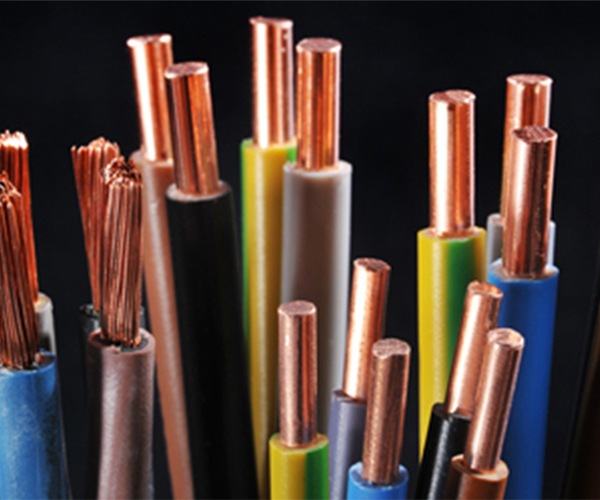Six Deadly Traps When Purchasing Electrical Wires: Avoid the Minefields and Protect Your Lifeline
Sammanfattning:
Purchasing electrical wires is no small matter. Common mistakes, such as being blinded by low prices, misjudging specifications, and confusing models, can create fire hazards. This article deeply analyzes six core misconceptions and, drawing on authoritative data and standards, helps you avoid these pitfalls and build a strong defense for home electrical safety.

Electrical wires, the silent lifeblood of home safety, can often become “invisible killers” due to careless purchasing. Avoiding these pitfalls is the only way to protect your lifeline.
Trap 1: Superstitious about Low Prices, Giving Safety a Backseat to Greed
The “lowest price wins” mentality, like with electrical wires, is the beginning of danger. Low prices often harbor inferior raw materials and illegal production. A report from the General Administration of Quality Supervision, Inspection and Quarantine shows that approximately 15% of commercially available electrical wires have insufficient conductor cross-sectional area or inferior insulation materials. These “reduced-material” products have a dramatic increase in resistance, which can accelerate aging at best and even ignite fires at worst. Safety Warning: Brand reputation and legitimate channels are the cornerstones of safety. Brands like Zhujiang Cable strictly control raw materials and processes. While costly, this is a life-saving measure.
Trap 2: Bigger gauge, safer? The price of blind worship
Many users believe that “bigger gauge, safer” actually leads to a dilemma of wasted resources and potential safety hazards. Household service wires must be ≥4mm². 2.5mm² is sufficient in bedrooms and living rooms. Kitchens and bathrooms, where high-power appliances are concentrated, require 4mm² (according to the “Electrical Design Standard for Civil Buildings” GB51348). Blindly upgrading, such as using 6mm² wire in the bedroom, not only wastes copper resources, but also mismatches the wire diameter with switches, increasing the risk of overheating at the connection points. Precisely matching power usage scenarios is the scientific approach.
Trap 3: Model confusion: Performance differences cannot be ignored.
The “just-power-on” mindset overlooks key performance differences. The performance of standard electrical wires (such as BV) differs significantly from flame-retardant (ZRBV), fire-resistant (NHBV), and halogen-free low-smoke (WDZB) wires in fires. Data from the Fire Department of the Ministry of Emergency Management indicates that over 30% of electrical fires are caused by insulation failure in wires. Flame-retardant/fire-resistant cables are mandatory in high-rise buildings and crowded places (Code for Fire Protection Design of Buildings, GB50016). Choosing the model based on the environment can be a lifesaver in critical moments.
Trap 4: Certification Marks, the Underestimated Security Code
CCC (China Compulsory Certification) is the “identity card” for wire market access, yet it’s often overlooked. Products without this mark have not undergone safety tests, such as pressure testing and flame retardancy testing. International Electrotechnical Commission (IEC) standards are also crucial, as these certifications represent internationally recognized safety standards. When purchasing, look for a clear CCC mark and the corresponding standard number (e.g., GB/T 5023) as a fundamental respect for safety.
Trap Five: False Advertising, Empty Promises
Slogans such as “Never Aging” and “Exceeding National Standard Loads” are rampant in the market. The lifespan of wires is significantly affected by the materials and the environment. National standard GB/T 12706 stipulates that the normal service life of PVC-insulated wire is approximately 25-30 years. The so-called “never aging” claim violates the laws of materials science. Be wary of excessive promises and rely on authoritative test reports. Brands like Zhujiang Cable provide complete and publicly accessible quality inspection data.
Trap Six: Installation and Maintenance, Broken Links in the Safety Chain
Even the highest-quality wires require standardized installation and regular maintenance. Loose connections, long-term cable overloading, compression by heavy objects, or corrosion from humid environments can all lead to accidents. The National Fire Protection Association reports that over half of electrical fires are caused by improper installation or use . Professional installation, regular inspections, and avoiding overloads are the ultimate guarantee of a closed-loop safety system.
Choosing electrical wiring is a silent battle against hidden dangers. From rejecting low-price temptations and accurately matching specifications and models, to identifying and verifying certifications and being wary of false promises, to prioritizing installation and maintenance—adhering to these six lines of defense is the most solid commitment to life and property. Let Zhujiang Cable’s reliable products, forged to stringent standards, become the cornerstone of your safe electrical use. Every rational choice brings lasting peace and security to thousands of homes.
VANLIGA FRÅGOR
Q1: Is cheaper wire always a better deal?
A: No. Cheap wires often use substandard materials, increasing fire risks. Always choose certified brands.
Q2: Is thicker wire always safer?
A: Not always. Oversized wires waste resources and may cause connection overheating. Match specs to usage (e.g., 4mm² for kitchens).
Q3: Does wire model type matter?
A: Yes. Use flame-retardant (ZRBV) or fire-resistant (NHBV) wires in high-risk areas like kitchens per GB50016 standards.
Q4: What certifications should I check?
A: Look for CCC marks (China Compulsory Certification) and IEC/GB standards on packaging.
Q5: Can “never-aging” wires exist?
A: No. All wires degrade. PVC-insulated wires last 25-30 years max (GB/T 12706).
Q6: Does installation affect wire safety?
A: Critical! Over 50% of electrical fires stem from poor installation (NFPA data). Hire licensed electricians.
